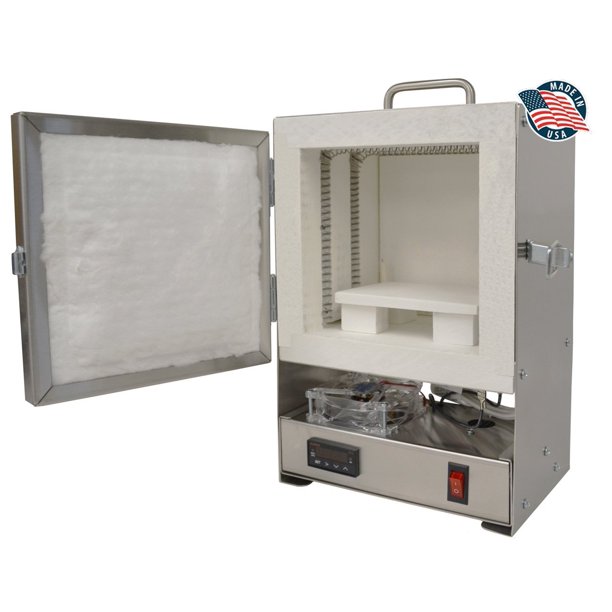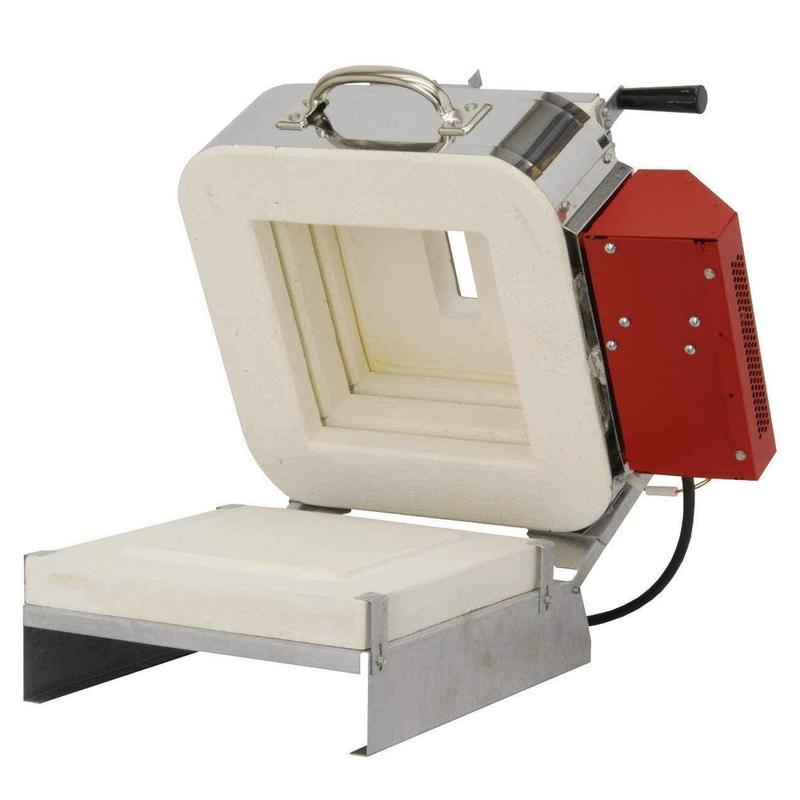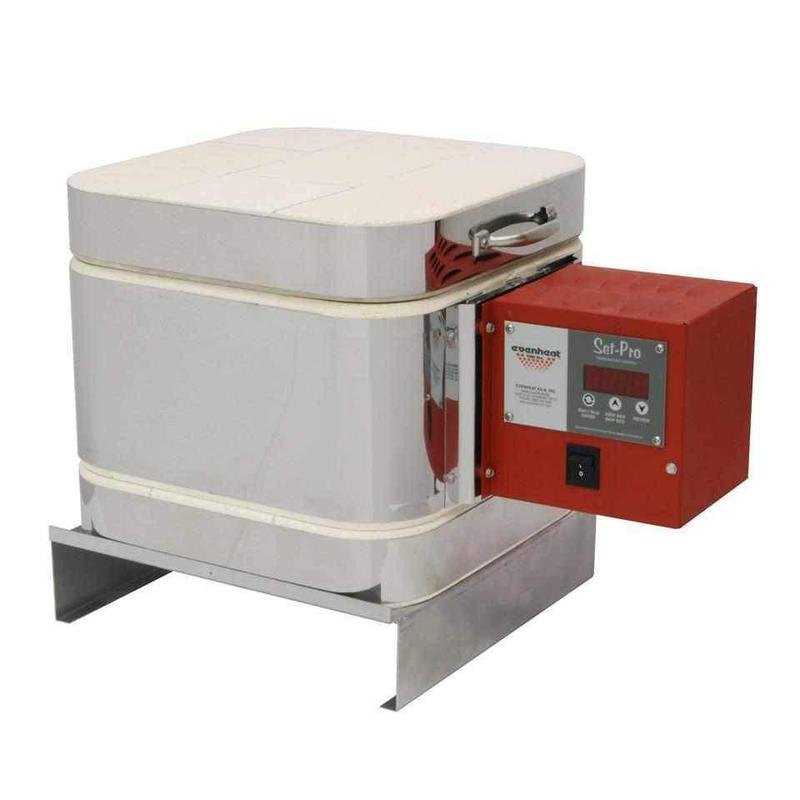Do you want to turn your pottery hobby into a side hustle?
Or maybe you’re just tired of waiting for a studio to fire your clay creations for you. Perhaps you’re looking for more control of your time.
Then a pottery kiln is what you need!
We know how tricky it can be to choose from thousands of search engine results. So we are going to be talking about pottery ovens, specifically how to choose one that will suit your budget.
Is this something you want to know more about? Then keep on reading!
Types of Pottery Ovens or Kilns
Pottery ovens or kilns come in different makes and sizes. This makes it seem intimidating and stressful for many first-time potters.
To make it easier, we’re going to be talking about some of the different types of pottery kilns in the market.
But before that, let’s talk about what a kiln is.
Kilns are insulated chambers that use fuel or electricity to reach high temperatures and “cook” the pottery clays placed within.
There are different types of kilns to fire different materials. There are kilns specifically designed for ceramics, glass, metal, clay, brick, and enamels.
Now let’s get into the types of kilns:
Gas Kilns
Image
Gas kilns consist of a chamber that is insulated with fire bricks and uses either natural gas or propane to heat up. Heat is introduced to the chamber by openings called burner ports. These types of kilns either have an updraft or a downdraft design.
Some gas kilns have loosely stacked fire bricks that help prevent the flame from touching and marking the ware called “bag walls”.
Gas kilns are quite easy to come by. You can find them at Amazon or Walmart.
- Updraft Kilns
Updraft kilns typically have burner ports on either side of their base. The lit gas travels up the side of the kiln to heat up the chamber.
The heat rises from the button to the top of the kiln called the flue, hence the name “updraft”. The volume of the draft can be controlled using a damper on top of the flue.
- Downdraft Kilns
Downdraft kilns also pass heat through burner ports. But unlike updraft kilns, a downdraft kiln doesn’t have a flue at the top. Because of this, the heat has no other way to escape than to circulate downwards again.
The hot draft travels down into the kiln chamber, heating the wear twice. It is for his reason that downdraft kilns are considered to be more efficient than updraft kilns.
The flue in the downdraft kiln is located at the base.
Electric Kilns
Electric kilns are considered as “the new kid on the block”. But despite that nickname, it has become a very popular alternative to hobby potters.
The main reason for its popularity is that these are convenient and relatively economical to install and use. Some electric kilns need to be wired directly into an electric supply, while others can be plugged into a domestic electricity supply.
Just like gas kilns, electric kilns have internal chambers that are insulated with refractory brick. A refractory material can withstand high temperatures and has insulating properties.
However, electric kilns are heated by metal coils, or elements, that are positioned in grooves cut into the brick wall. An electric current flows through the elements and the metal coils heat up.
Modern kilns can be controlled by digital kiln controllers, allowing you to pre-program the kiln through a carefully controlled firing schedule.
BUT this does not mean that you can leave your kiln unattended as it fires, electric or otherwise!
You can purchase your electric kilns from Blick.com.
Raku Kilns
Raku is an approach to firing where pottery is removed from the kiln when it is red hot. The pottery is then put in a closed container, along with combustible material like paper. The combustible material burns when it makes contact with the hot ware.
Raku kilns are basically gas-burning kilns and it commonly uses propane gas.
Raku kilns can be bought from stores such as Blick and Walmart but you can DIY them at home if that’s what you prefer.
But wait! Before you hop on to the websites we’ve linked above, let’s talk about things that you should consider before you buy your kiln!
What are the Factors to Consider When Buying a Pottery Oven?
Imagine not having to wait for a pottery studio to fire your work. You can get your project done as soon as you want to!
But before you make a purchase, you will need to consider a few things. Let’s talk about them!
- How big should my kiln be?
The size of your kiln will depend on your budget, space, and the size and volume of your work. You may be making little knick-knacks right now, but you might decide to scale up your business in the future.
- Where should I put my kiln?
Your unused garage, utility room, or personal shed can be great places to store your kiln. Your main priority should be to store your kiln separately from your living space.
- Will I need to vent my kiln?
If you want to avoid fires and other nasty accidents, you will want to make sure that your workspace is well-ventilated.
- Will my kiln need to be wired in?
Some smaller kilns can be plugged in like a kettle. But larger ones need to be hard-wired in by professionals. You don’t need to shell out wads of cash, any good electrician can do the job.
Some Safety Considerations When buying a Kiln:
Now that you have some idea as to what type of kiln you need. Here are some safety measures to keep in mind:
- Never put anything on top of your kiln, even when it’s turned off!
- Never lean anything on your kiln, even when it’s not firing.
- Make sure to get professionals to handle your electric kiln’s wiring!
- Always follow the instructions given by the kiln manufacturer regarding usage.
- Always put a padlock on your kiln when it is firing.
- Never open your kiln unless it’s room temperature.
- Never leave your kiln unattended when cooling or firing.
The Best Pottery Kilns of 2021
Now that you know the basics about owning, buying, and using a kiln. We’ll talk about the best pottery kilns of 2021.
The brand doesn’t really matter. You should just buy whatever kiln fits your current needs. Don’t listen to your snoopy neighbor who uses $4,000 kilns! You don’t need that!
Hobbies and new business ventures can be expensive. So we’re going to talk about affordable kilns that you can purchase right now. Don’t worry, these don’t cost a fortune. But you do have to pay for quality.
And if the prices are too high, you are more than welcome to buy second-hand ones! Just be sure to check the condition of the kilns you’re looking at.
Let’s talk about some of the best pottery kilns of 2021!

If you are after portability, then RapidFire Pro-L is the one for you. It’s small, easy to store, and yields amazing results while only being a fraction of the cost of other pottery kilns.
Who is it for?
RapidFire Pro-L is ideal for jewelry, metal clays, and ceramic firing. It comes with a digital control panel, and a wide-opening door to make it easier for potters to get their projects in and out without any complications.
Weighing at only 12 lbs, it’s light enough to take with you on the go!
Don’t believe us? Here’s a video showing you exactly how compact it is:
The digital controller can be found in the front. You simply press the corresponding buttons to increase or reduce the heat.
Once you’re through, you can simply flip the “on and off” switch. It’s that easy to use!
What we like:
- It’s incredibly lightweight, compact, and easy to store and bring around.
- It’s affordable but has an amazing value for its price.
- It heats up fast. Reaching 2200°F (1205°C) in less than 10 minutes.
What we don’t like:
- It tends to release a lot of smoke when working with clay.
Where can you find it?
You can get your very own RapidFire Pro-L at Walmart!

Evenheat Glass Kiln – Studio Pro STP is a compact, affordable, and easy-to-use kiln. It requires no special setup. Just take it out of the box and plug it in. It is equipped with the Set-Pro controller and metal clay presets for a more accurate firing.
They even have a FREE 2 YEAR WARRANTY!
Who is it for?
If you’re looking for a ready-to-use kiln, then Evenheat Glass Kiln – Studio Pro STP is your go-to. It’s perfect for jewelry makers, or any clay product that is relatively small in size. Think small pins, bowls, and figurines!
It has a max temperature of 1800°F (982°C). Not the highest, but still pretty good considering its price range!
It may be small, but don’t let that deter you from making a purchase. The way the body is designed makes it very stable.
What we like:
- It’s designed to use standard household voltage current
- It’s made with a 2 position lid vent for optimal cooling
- The rear-exiting power cord keeps your workspace clutter-free
What we don’t like:
- Its size can’t handle larger clay structures.
Where can you find it?
You can get your very own Evenheat Glass Kiln – Studio Pro ST at Soul Ceramics!

Evenheat Glass Kiln – V8 is another bang-for-your-buck. It’s a little bit pricier than the Evenheat Glass Kiln – Studio Pro ST, but you’ll know why in a minute.
It is capable of all firing types like vitrigraph, ceramic, and metal clays. It uses a special method called “zero crossing” that shuts down heating elements when the voltage is at 0V. This allows the heating elements to take a break, helping them last longer – plus, you get to save on energy costs!
Who is it for?
If you are a hobby potter or a teacher on a budget, then Evenheat Glass Kiln – V8 is going to be your best friend. Jewelry designers will also have a blast using this model – no pun intended.
Want to work with larger projects? Don’t sweat it! Evenheat Glass Kiln – V8 has a corner-mounted thermocouple that allows large items up to 7.25”!
Here’s a short video demo:
What we like:
- It’s designed to use a standard household plug
- It has a corner-mounted thermocouple and allows larger pots up to 7.25”!
- It packs a huge value for your money
What we don’t like:
- Its Set-Pro controller isn’t as flexible as others.
Where can you find it?
You can get your very own Evenheat Glass Kiln – V8 at Soul Ceramics!

Paragon – SC2 is another go-to for teachers, small-business owners, and hobby potters. Its ceramic fiber firing chamber is wrapped in a steel inner case. The outer steel case remains cool thanks to the layer between it and the inner case.
Because the case is slotted for air circulation, the electrical components stay cool even at extended hold times!
It’s larger than the previous three kilns, but it’s just as portable. It can hold up to three shelves. Meaning more room for creation!
Who is it for?
Paragon – SC2 is perfect for small business owners, jewelry makers, potters, and craft instructors.
Paragon – SC2 is one of the best investments you could ever make. It has a lot of benefits, despite its mid-range price range.
What we like:
- You can make a lot of clay articles at once
- Even heat distribution thanks to having two separate heating elements on the left and right sides of the firing chamber.
What we don’t like:
- It’s a bit on the chunkier side.
Where can you find it?
You can get your very own Paragon – SC2 at Soul Ceramics!

Paragon – SC2 Pro has the same ceramic fiber firing chamber as the standard SC2, but it has an additional brushed stainless steel door. The control panel in the Sc2 Pro is sloped for easy viewing and operation.
One other upside to the SC2 Pro is its firing schedule. Paragon – SC2 Pro turns itself off when the firing has been completed. But don’t take this as a sign to leave your kiln while it’s still firing!
Who is it for?
Paragon – SC2 Pro is perfect for small business owners, jewelry makers, potters, and instructors.
It’s also the perfect first-time investment for potters and crafters on a tight budget. If you’re looking to invest in your pottery or glassware business, then the Paragon – SC2 Pro is the one for you.
What we like:
- Electrical components stay cool even at extended hold times
- Even heat distribution thanks to having two separate heating elements on the left and right sides of the firing chamber.
- It’s affordable and easy-to-use setup.
What we don’t like:
- It has a no-frills controller but does not offer as much flexibility as other controllers.
Where can you find it?
You can get your very own Paragon – SC2 Pro at Soul Ceramics!
Conclusion
There is no such thing as a single best kiln in the industry. What matters is that you go with the one that will serve you and your projects best!
Don’t worry, we made sure to only include the best-quality kilns linked above. You won’t go wrong if you give those a look. We hope they serve you well.
Best wishes on your future projects!

